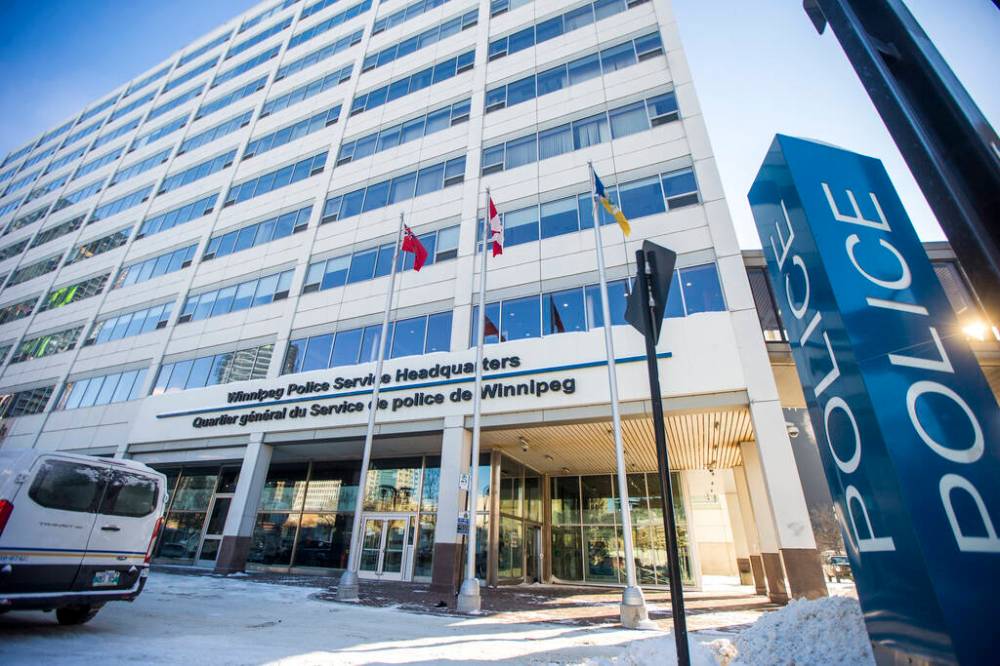City needs solution to police budget numbers puzzle
Read this article for free:
or
Already have an account? Log in here »
To continue reading, please subscribe:
Monthly Digital Subscription
$0 for the first 4 weeks*
- Enjoy unlimited reading on winnipegfreepress.com
- Read the E-Edition, our digital replica newspaper
- Access News Break, our award-winning app
- Play interactive puzzles
*No charge for 4 weeks then price increases to the regular rate of $19.00 plus GST every four weeks. Offer available to new and qualified returning subscribers only. Cancel any time.
Monthly Digital Subscription
$4.75/week*
- Enjoy unlimited reading on winnipegfreepress.com
- Read the E-Edition, our digital replica newspaper
- Access News Break, our award-winning app
- Play interactive puzzles
*Billed as $19 plus GST every four weeks. Cancel any time.
To continue reading, please subscribe:
Add Free Press access to your Brandon Sun subscription for only an additional
$1 for the first 4 weeks*
*Your next subscription payment will increase by $1.00 and you will be charged $16.99 plus GST for four weeks. After four weeks, your payment will increase to $23.99 plus GST every four weeks.
Read unlimited articles for free today:
or
Already have an account? Log in here »
Hey there, time traveller!
This article was published 19/07/2022 (1237 days ago), so information in it may no longer be current.
The cost of policing in Winnipeg jumped five per cent on a per capita basis last year. Part of the reason: its population shrunk slightly in 2021.
Still, the increase — the largest in five years — reveals the need to further control police expenditures, which continues to gobble up more than one-quarter of the city’s operating budget.
Winnipeg taxpayers shelled out $320.7 million to fund police operations last year, according to the 2021 Winnipeg Police Service annual report. That’s $418 per person, up five per cent from $398 in 2020.
In 2017, per capita policing costs fell two per cent and increased by less than inflation in subsequent years. Last year’s jump was driven in part by a small population decline in Winnipeg (354 people). Like many Canadian cities, the Manitoba capital’s population fell slightly during the COVID-19 pandemic, owing to a temporary slowdown in immigration.

What the figures show is policing costs continue to be unsustainable in Winnipeg. While some progress has been made in recent years to curb massive increases to the WPS budget seen in the early 2000s, policing costs still take up far too much of the city’s financial blueprint.
Police funding skyrocketed 64 per cent between 2005 and 2015, adjusted for inflation. As a share of the city budget, it increased to 26.5 per cent from 18.5 per cent. It remains at that level today, leaving less on the table for important civic services, such as street and park maintenance, transit and recreation.
The main driver behind soaring police costs is salaries and benefits. Labour costs make up 85 per cent of WPS expenditures.
The city has managed to control those costs, to some degree, over the past five years. Police salaries grew as much as four per cent a year under former mayor Sam Katz (2004-14). They have since been reduced to annual increases of 2.5 per cent, but continue to be unsustainable. Police constables now make well over $100,000 a year.
The main driver behind soaring police costs is salaries and benefits. Labour costs make up 85 per cent of WPS expenditures.
Controlling police wage increases is no easy feat, given the threat of binding arbitration that hangs over the heads of city negotiators during collective bargaining. It would be nearly impossible to freeze those wages without massive concessions in other areas.
That has left police brass with no choice but to reduce the number of sworn officers on the payroll to control costs. The number of officers per 100,000 people in Winnipeg has dropped to 176.7 in 2021 from 196.7 in 2016 — a 10 per cent decline.
However, it’s still on the high end compared with other major Canadian cities, which means there’s still room to downsize.
One of the problems is the city hasn’t done an analysis of what the optimum level should be.
The Winnipeg Police Board’s goal in 2018 was to bring the per capita complement in line with the national average. It has since abandoned that benchmark. The board had a similar target for per capita policing costs, which has also disappeared from its long-term strategic plan.

Reducing per capita policing may be a tough sell right now, given the recent spate of violent crime in Winnipeg.
Crime rates go through cycles. Winnipeg’s overall crime rate fell last year, but violent offences rose (including gun crimes). Those tend to get the most attention, for good reason.
Adding more officers to the payroll won’t reduce crime, but a certain number are required to respond to emergency calls and investigate crimes. The number of emergency dispatched calls jumped 26 per cent last year, compared with 2020. It’s the second-highest level in recent history.
At the same time, the number of non-emergency calls — including well-being checks — was also up, a lot. Therein lies the problem.
The number of emergency dispatched calls jumped 26 per cent last year, compared with 2020. It’s the second-highest level in recent history.
Well-being checks topped the list of citizen-generated dispatched calls in 2021 (20,704 police dispatches) for the second year in a row, ahead of domestic, disturbance and suspicious person calls. There are less costly and more appropriate ways to respond to those types of calls than to deploy police officers.
It’s not a new debate, but until the province and City of Winnipeg sit down and find those solutions, expensive police resources will continue to be misdirected.
Winnipeg doesn’t need more cops on the payroll to fight violent crime. The city needs to use the resources it has more efficiently.
tom.brodbeck@freepress.mb.ca


Tom has been covering Manitoba politics since the early 1990s and joined the Winnipeg Free Press news team in 2019.
Our newsroom depends on a growing audience of readers to power our journalism. If you are not a paid reader, please consider becoming a subscriber.
Our newsroom depends on its audience of readers to power our journalism. Thank you for your support.








